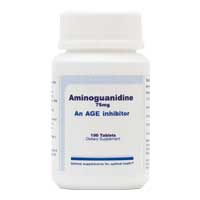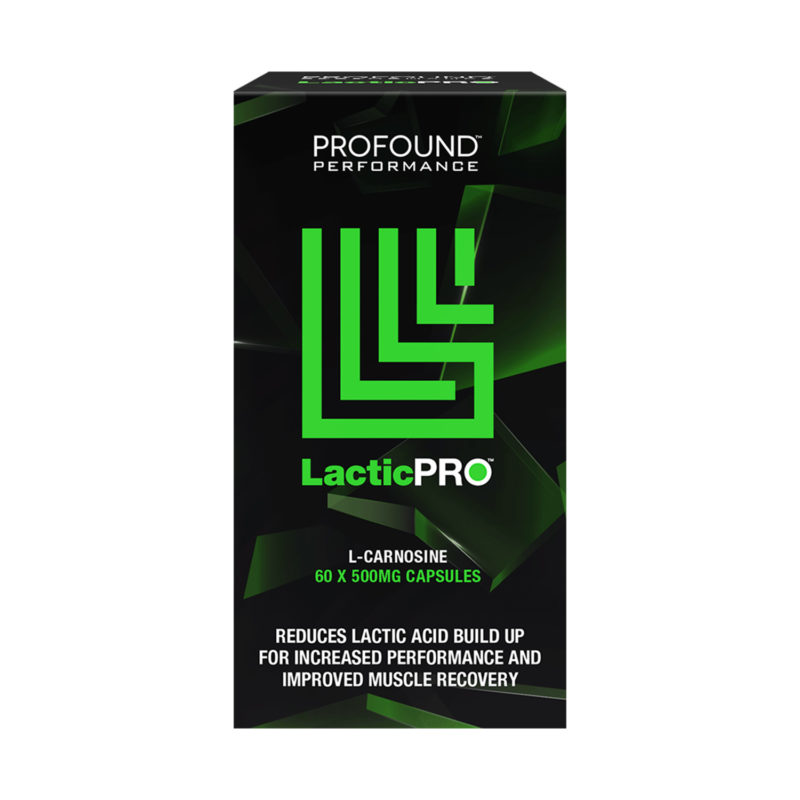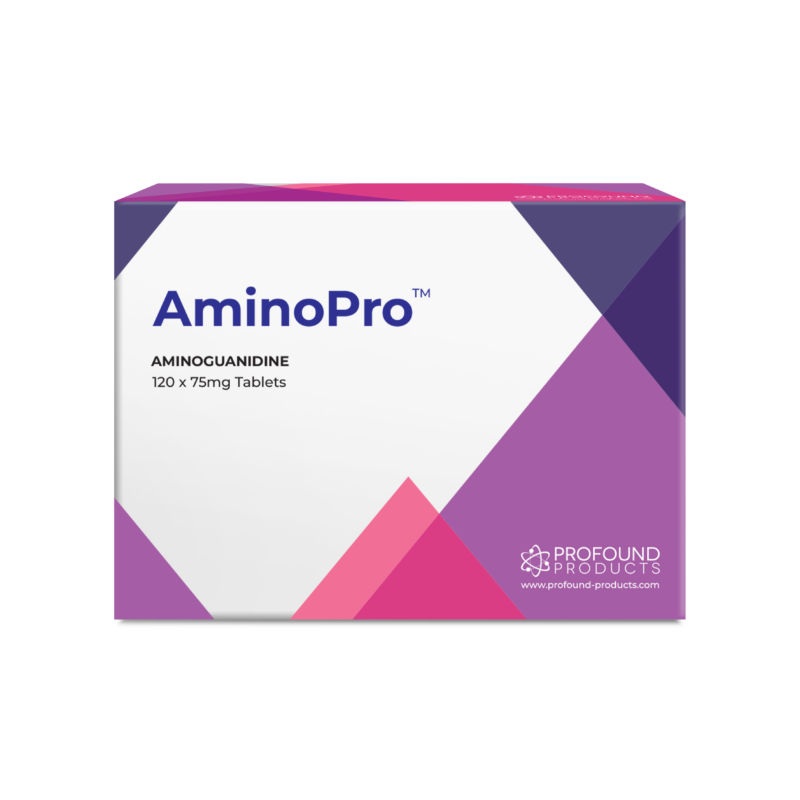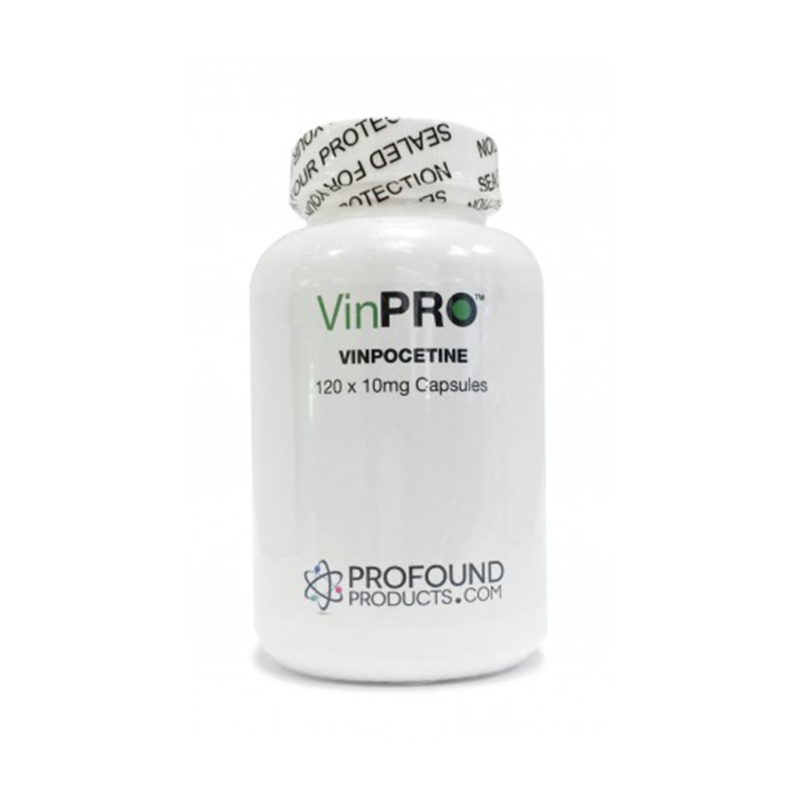An effective combination of the anti-aging compounds resveratrol, aminoguanidine, vinpocetine and carnosine
In order to fight age-related degeneration, many anti-aging physicians and researchers recommend the intake of not one or two agents but a finely tuned combination of several compounds which have a wide spectrum of actions. In this article I am going to discuss my favourite combination of a few selected and pluripotent (i.e. having multiple actions) anti-aging compounds. These are resveratrol, aminoguanidine, vinpocetine and carnosine, all taken together for maximum effect. The reason why these anti-aging compounds need to be taken in combination is that they enhance each other’s actions through a phenomenon called ‘reciprocal enhancement’, or ‘biological amplification’. This means that the total sum of the benefits is more than the sum of the benefits of the individual components when taken in isolation.
Resveratrol
 Found mainly in red wine, this polyphenol is a well- known and respected anti-aging compound. Importantly, it is being increasingly recognised as a calorie restriction mimetic. This means that it has several physiological benefits that are identical to those seen during calorie restriction. In a recent paper researchers from the National Institute on Aging in Baltimore, USA, state that; “… there is vast interest in the development of compounds such as resveratrol, … that would activate the same metabolic- and stress-response pathways induced by calorie restriction without actually restricting caloric intake” (1).
Found mainly in red wine, this polyphenol is a well- known and respected anti-aging compound. Importantly, it is being increasingly recognised as a calorie restriction mimetic. This means that it has several physiological benefits that are identical to those seen during calorie restriction. In a recent paper researchers from the National Institute on Aging in Baltimore, USA, state that; “… there is vast interest in the development of compounds such as resveratrol, … that would activate the same metabolic- and stress-response pathways induced by calorie restriction without actually restricting caloric intake” (1).
There have been many other new reports covering a variety of hitherto unknown benefits of resveratrol. For example, it was reported that resveratrol protects heart muscle cells against toxicity, particularly during chemotherapy. It can prevent or block the actions of inflammatory chemicals such as certain kinases (S6K1) (2).
It plays a role in protecting brain function, and it can even be considered as a ‘nootropic’ i.e. a brain booster according to American researchers (3).
More specifically, it was shown that resveratrol given to mice which have been genetically engineered to carry a gene that causes neurodegeneration (the mitochondrial protease HtrA2 gene), protects against the condition and reduces the risk of dementia and Parkinson’s disease. In addition, it prolongs lifespan (4). The researchers believe that this is because resveratrol can regulate apoptosis, (controlled cell death) and slow down any unnecessary loss of brain cells. While on the subject, these researchers also found that idebenone, has similar benefits, and therefore it may be worth considering using these two agents in combination for a maximum benefit.
An important biochemical pathway involved in aging is the NAD/NADH-sirtuin-1 pathway (5) which is notoriously activated by resveratrol. This means that resistance to aging, inflammation and cellular stress may be directly related to the actions of resveratrol. However, it is important to note that this is a biphasic response, meaning that low dose of resveratrol can activate the system, whereas a high dose may inhibit it. This is one of the examples where ‘more is not necessarily better’. It is necessary to adjust the dose of any anti-aging compound and combine it wisely with other relevant agents. That is why the help of an experience practitioner will help, whereas a ‘do-it-yourself’ approach is to be discouraged.
Aminoguanidine
 This is a typical anti-glycation agent and has been proven as effective in many past experiments. It is a carbonyl scavenger, meaning that it prevents abnormal glycation of many molecules such as proteins and the DNA. Here I am going to concentrate in the most recent research, which supports existing or hitherto unclear properties of aminoguanidine.
This is a typical anti-glycation agent and has been proven as effective in many past experiments. It is a carbonyl scavenger, meaning that it prevents abnormal glycation of many molecules such as proteins and the DNA. Here I am going to concentrate in the most recent research, which supports existing or hitherto unclear properties of aminoguanidine.
For example, a new property of aminoguanidine appears to be its ability to protect against heart muscle degeneration. Polish scientists (6) have shown that a particular form of aminoguanidine called β-resorcylidene aminoguanidine (RAG), apart from being an established antioxidant and anti-glycator, it also improves oxidative phosphorylation and electron transport capacity in heart muscle mitochondria damaged by diabetes. The scientists conclude that: ”This results in a protection of heart muscle cells against the damage caused by diabetes The results revealed that RAG protects the heart against diabetes-associated injury by improving the mitochondrial bioenergetics, thus suggesting a possible novel pharmacological strategy for cardioprotection”.
Aminoguanidine inhibits the glycation and consequent crosslinking of collagen and reduces the formation of abnormal cellular aggregates related to glycation, (AGEs- advanced glycation end products). This is not useful only in improving skin, but more importantly in improving and maintaining the function of the arteries. Crosslinked collagen results in stiff arteries which cause high blood pressure and stroke.
Apart from its anti-glycating actions, aminoguanidine can normalise the function of the arteries via another mechanism. Japanese scientists have found that aminoguanidine normalises the activities of endothelin-1 which causes vasoconstriction. A narrow artery increases the risk of blood flow problems and contributes to the risk of stroke. Endothelin-1concentration is increased in diabetes, and this results in narrow arteries. But the presence of aminoguanidine inhibits the actions of endothelin-1, helping the artery to relax and thus allow more blood to flow through it.
Another important action of aminoguanidine is its ability to reduce inflammatory markers. For example the agent N(ε)-(carboxymethyl)lysine (CML) is present when there is inflammation and abnormal fat concentration in the liver. However, aminoguanidine (and also pyridoxamine, another anti-glycator) are able to reduce the CML concentrations and this results in a reduced risk of liver cell inflammation. Several scientists are now considering aminoguanidine not just as an anti-glycation agent, but also as an anti-inflammatory one. This combined action is ideal in chronic degenerative disease involving the pancreas, liver and fat tissue, all of which are doubly affected by both glycation and inflammation.
Interestingly, the combination of aminoguanidine and pyridoxamine has been studied in relation to cataracts. It was shown that this combination reduces the risk of crystalline damage within the lens of the eye, and therefore reduces the overall risk of cataract. Carnosine, as mentioned below, has actions similar to aminoguanidine, and the acetylated form of carnosine in eye drops form is in use for cataract protection, based on similar mechanisms, the eye-drops are known as Can-C™.
Vinpocetine
 Vinpocetine, chemically known as ethyl apovincaminate, is a neuroprotective vinca alkaloid with a proven ability to enhance blood flow in the brain (7). Even long term treatment with vinpocetine has not been associated with any significant side effects, so this is one of the few nootropics that is considered very safe. It works in a variety of ways, which ultimately result in a reduced risk of age-related brain pathology.
Vinpocetine, chemically known as ethyl apovincaminate, is a neuroprotective vinca alkaloid with a proven ability to enhance blood flow in the brain (7). Even long term treatment with vinpocetine has not been associated with any significant side effects, so this is one of the few nootropics that is considered very safe. It works in a variety of ways, which ultimately result in a reduced risk of age-related brain pathology.
For example, it was shown that vinpocetine inhibits a chemical pathway, (the cAMP signalling pathway) which has been implicated in several degenerative conditions and in this case, in ADHD (attention deficit hyperactivity disorder). Although ADHD is not age-related, it is nevertheless believed to result from imbalances within the cAMP pathway, which has also been implicated in age-related conditions. Therefore, the basis of vinpocetine’s action is now becoming much clearer with regards to other conditions such as dementia, memory loss and neuro-motor related problems (8).
Vinpocetine inhibits glutamate release. Glutamate is a key neurotransmitter but if present in high amounts it can cause neurotoxicity. It is important that its concentration is tightly controlled. This is not always possible and during the aging process, the concentration of glutamate can dangerously increase. Vinpocetine directly blocks the Na+ channels on the cell membrane and this reduces abnormal release of glutamate. In an experiment, vinpocetine was found to be more potent in blocking glutamate that the commonly used antiepileptic drugs carbamazepine, phenytoin, lamotrigine and oxcarbazepine (9). This is additional evidence supporting the use of vinpocetine as an adjuvant anticonvulsive agent.
Vinpocetine also acts as a brain antioxidant and it protects against brain toxicity and demyelinisation. It regulates the levels of the neurotransmitter acetycholine, which has been implicated in dementia. Another nootropic, piracetam, has similar actions in this respect, and some scientists recommend that both are used in cases of severe brain toxicity. This mutually beneficial combination of vinpocetine and piracetam has been studied by several scientists who have reported that it prevents oxidation and excessive release of toxins within the brain.
Carnosine
 This dipeptide (β-alanyl-l-histidine) has a surprising range of anti-ageing actions, from antioxidant, anti-glycation, and heavy metal chelation to modulation of apoptosis. It is a true pluripotent agent, and an ideal or even essential component of any anti-ageing regime. In one report, Japanese researchers have found that injection of carnosine significantly increases natural killer (NK) activity in the spleen. This, in turn improves immunity, particularly against cancer development. (10)
This dipeptide (β-alanyl-l-histidine) has a surprising range of anti-ageing actions, from antioxidant, anti-glycation, and heavy metal chelation to modulation of apoptosis. It is a true pluripotent agent, and an ideal or even essential component of any anti-ageing regime. In one report, Japanese researchers have found that injection of carnosine significantly increases natural killer (NK) activity in the spleen. This, in turn improves immunity, particularly against cancer development. (10)
This is just a small example of the wide range of actions- some of which include benefits in muscle strength and stamina, cardioprotection, strengthening of immunity, skin benefits, and of course effectiveness against cataract (as N-acetyl-carnosine as in Can-C™ eye-drops).
Because pure carnosine can be rapidly inactivated by carnosinases, there has been increased interest in developing forms of carnosine that are resistant to inactivation, which means that they are active for much longer than ordinary carnosine. A form of carnosine called D-carnosine-octylester has been reported as effective against the formation of plagues in dementia, and reduces the ApoE phenotype. This form of carnosine reduced inflammation, regulated apoptosis and prevented necrosis of tissues (11). At this stage, it is worth mentioning that even inactivated carnosine (i.e. carnosine that has been split in to its two individual components, alanine and histidine) has remarkable biological benefits. It is known for example that beta-alanine alone increases the concentration of carnosine, improves exercise time, and general muscle function. (12)
Therefore, whilst many anti-ageing practitioners are not unduly concerned about carnosine being inactivated by carnosinases, it appears that this is a continual, cyclical process whereby carnosine is reduced to alanine and histidine, and these two then, in return, increase the concentration of carnosine.
It is not generally appreciated that carnosine has an important neuroprotective action. In the most recent experiments it was found to improve mitochondrial function and amyloid accumulation during cases of dementia. If used in association with other neuroprotective agents such as vinpocetine, then its benefits become much more pronounced (13).
With regards to carnosine’s neuroprotective activity, it was also shown that treatment with carnosine reduces the risk of further damage following a stroke and protects the tissues surrounding an area that has been already damaged by reduced blood flow. Importantly, carnosine can also afford protection in neurotoxicity caused by prion diseases such as the spongiform encephalopathies, BSE/CJD and others. This is because it blocks cellular prion protein (PrP(C)) and does not allow it to damage the cells. Zinc and copper supplements complement the actions of carnosine in this respect.
Other carnosine analogues are now being investigated regarding their ability to penetrate the blood brain barrier and reach the brain much more easily than carnosine itself. These carnosine analogues may also have certain extra neuroprotective benefits as compared to carnosine alone, but research in this area is continuing.
Liposomal delivery
It has been known for several years that a better drug delivery could be achieved via the use of liposomes (phospholipid vesicles). Liposomes act as a controlled-release carrier of the compound in question or can deliver poorly soluble agents to the body. Liposomes enhance the permeability and retention of the compounds they carry.
Now compounds such as resveratrol, and others like glutathione and Q10 can be used by means of liposomal delivery. This makes the active substance much better available to where is needed and this method of delivery could be up to 90% more efficient compared to other methods of delivery.
Conclusion
Pluripotency is an important concept when it comes to aging. Traditional nootropics such as vinpocetine, can also be anti-inflammatory agents, whereas those normally associated with glycation (such as aminoguanidine and carnosine) can also have nootropic or anticancer properties. This is the reason why I mentioned at the beginning that these pluripotent agents need to be combined, because when one may be deficient in one area, the other will be effective in that specific area, and so the net result will be an almost complete anti-aging coverage. It is also important to keep changing the doses and combination patterns of these and other agents. This will ensure that the body remains stimulated and does not develop tolerance to the compounds.
Remember that constant stimulation and avoidance of routine is a key anti-aging factor.
References
-
- De Capo et al. Of mice and men: The benefits of caloric restriction, exercise, and mimetics Ageing Res Rev. 2011 Dec 20. [Epub ahead of print].
-
- Xu X, Chen K, Kobayashi S, Timm D, Liang Q. Resveratrol attenuates doxorubicin-induced cardiomyocyte death. J Pharmacol Exp Ther. 2011 Dec 30. [Epub ahead of print].
-
- Kennedy DO, Wightman EL. Herbal extracts and phytochemicals: plant secondary metabolites and the enhancement of human brain function. Adv Nutr (Bethesda). 2011 Jan;2(1):32-50.
-
- Gerhardt E, et al. Idebenone and Resveratrol Extend Lifespan and Improve Motor Function of HtrA2 Knockout Mice. PLoS One. 2011;6(12):e28855. Epub 2011 Dec 19.
-
- Calabrese V, et al. Cellular stress response: a novel target for chemoprevention and nutritional neuroprotection in aging, neurodegenerative disorders and longevity. Neurochem Res. 2008 Dec;33(12):2444-71.
-
- Labieniec-Watala M, et al. Resorcylidene Aminoguanidine (RAG) Improves Cardiac Mitochondrial Bioenergetics Impaired by Hyperglycaemia in a Model of Experimental Diabetes. Int J Mol Sci. 2011;12(11):8013-26.
-
- Patyar S, et al. Role of vinpocetine in cerebrovascular diseases. Pharmacol Rep. 2011;63(3):618-28.
-
- Nunes F, et al. Acute administration of vinpocetine, a phosphodiesterase type 1 inhibitor, ameliorates hyperactivity in a mice model of fetal alcohol spectrum disorder. Drug Alcohol Depend. 2011 Dec 1;119(1-2):81-7.
-
- Sitges M, Sanchez-Tafolla BM, Chiu LM, Aldana BI, Guarneros A Vinpocetine inhibits glutamate release induced by the convulsive agent 4-aminopyridine more potently than several antiepileptic drugs. Epilepsy Res. 2011 Oct;96(3):257-66.
-
- Horii Y, et al. Effects of l-carnosine on splenic sympathetic nerve activity and tumor proliferation. Neurosci Lett. 2012 Jan 5. [Epub ahead of print].
-
- Menini S, et al. D-carnosine-octylester attenuates atherosclerosis and renal disease in ApoE null mice fed a Western diet through reduction of carbonyl stress and inflammation. Br J Pharmacol. 2012 Jan 9. [Epub ahead of print].
-
- Del Favero S, et al. Beta-alanine (Carnosyn™) supplementation in elderly subjects (60-80 years): effects on muscle carnosine content and physical capacity. Amino Acids. 2011 Dec 6. [Epub ahead of print].
- Corona C, et al. Effects of dietary supplementation of carnosine on mitochondrial dysfunction, amyloid pathology, and cognitive deficits in 3xTg-AD mice. PLoS One. 2011 Mar 15;6(3):e17971.


